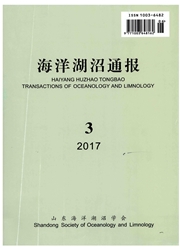

 中文摘要:
中文摘要:
应用常规地面高空观测资料、多普勒天气雷达和MODIS高分辨率卫星云图等资料以及中尺度数值模式,通过对山东一次典型的海效应暴雪过程进行深入的分析研究,重点分析了海效应暴雪中逆风区的特点和形成的可能原因,并应用高分辨率中尺度数值模式研究了地形作用对逆风区及相关物理量的影响。研究发现,本次暴雪过程中有多个不同尺度的逆风区存在,且不同下垫面条件下的逆风区存在不同的特点,这些逆风区与降雪强度关系密切。进一步研究发现暴雪垂直环流可能是造成逆风区的直接原因。山东半岛地形不仅能够促使垂直次级环流增强,而且可以改变海效应暴雪中不同尺度的对流系统的分布状况,同时还改变了海效应暴雪过程中水汽、雪水含量等在空间上的分布,继而影响整个暴雪过程,使相应的海岸锋更明显,暴雪强度更强且位置更偏北。
 英文摘要:
英文摘要:
By using the data of conventional observations, Doppler weather radar, meteorological satel- lite and meso-scale numerical model, the formation mechanism and sensitivity to terrain on adverse wind zone of ocean-effect snowstorm process occurred at Shandong on 16-17th Dec 2005 is analyzed. The results show that there are three types of adverse wind zones of multiple scale in the ocean-effect snow- storm, and they have different characteristics of intensity, range and life time with different surface conditions. The adverse wind zone which is directly caused by vertical circulation is closely related to the intensity of snowfall. The Shandong peninsula terrain can not only promote enhancements of tropo- spheric convergence of low-level winds and vertical movement, but also enhance the vertical secondary circulation and change the ocean-effect snowstorm in different scale convective systems. The terrain plays a very important role in the distribution and intensity of ocean-effect snowstorm. The precipitation increases obviously in the upwind direction of the mountain. Terrain changes the distribution of vapor and snow water, so that the terrain of Shandong peninsula makes the coastal front stronger and the snowstorm more intense and more northerly.
 同期刊论文项目
同期刊论文项目
 同项目期刊论文
同项目期刊论文
 期刊信息
期刊信息
